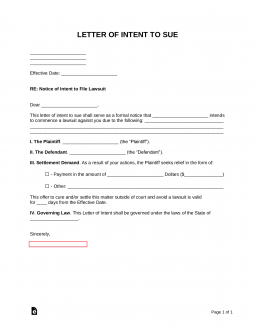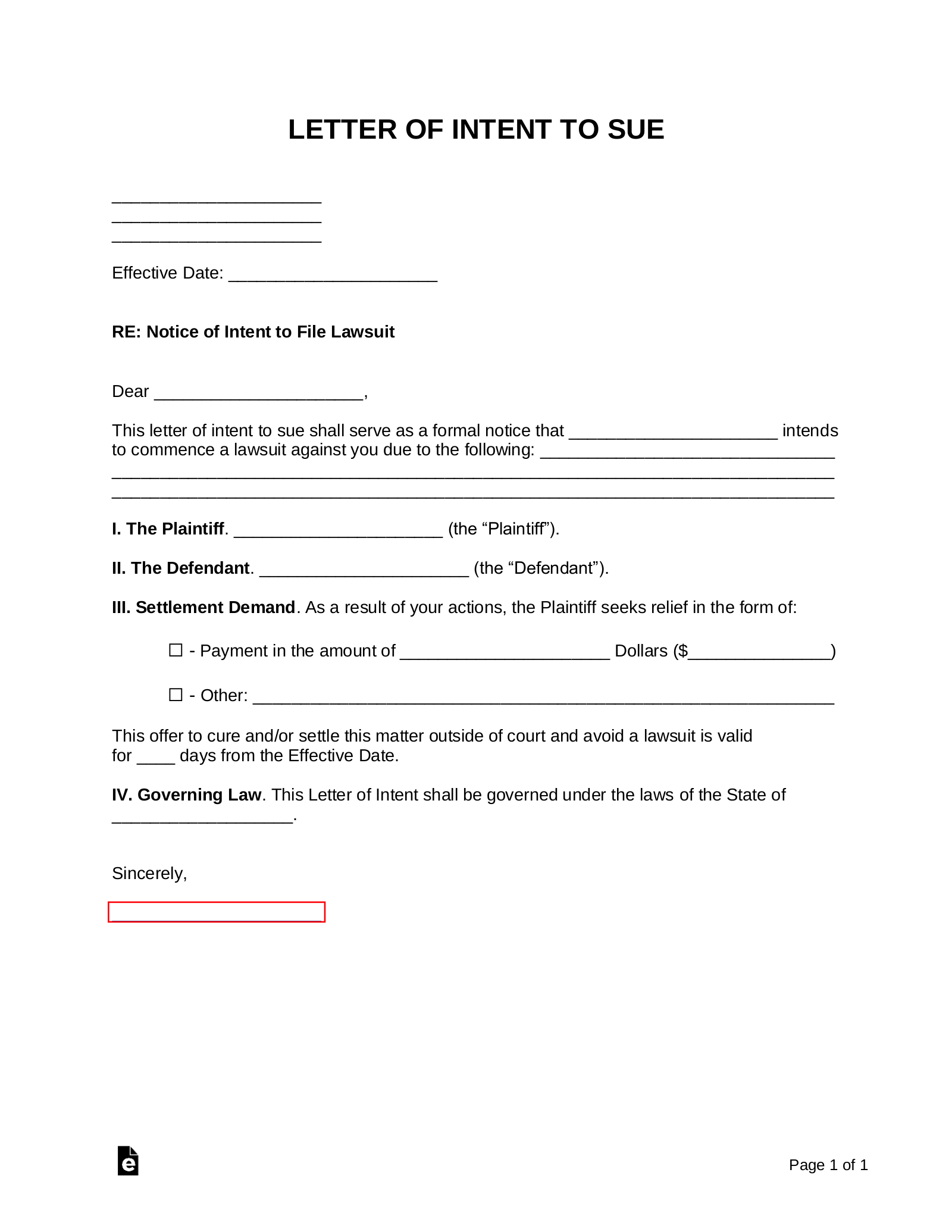Updated October 31, 2023
A letter of intent to sue notifies a defendant that a lawsuit may be filed against them in court if demands are not met. The letter will summarize the alleged unlawful act and indicate a time frame in which the defendant may settle the matter to avoid legal proceedings. Delivery of this notice is often required by law and may need to be sent via certified mail before initiating the filing process.
Regardless of any legal necessity for delivery, the form should still be issued to the defendant to help achieve a mutual agreement between each party and prevent a costly lawsuit.
Table of Contents |
What is a Settlement Demand?
A settlement demand is a request made to a defendant that, if the demands are not met, a lawsuit will be filed. The defendant will usually be given 30 days to fulfill the requests made in the letter.
Sample
LETTER OF INTENT TO SUE
John Blackstone of Drummond & Blackstone Law Firm
150 Main Street, Tampa, FL 33606
1(888) 500-3344
jmblackstond@dandblawfirm.com
Effective Date: October 1, 2019
RE: Notice of Intent to File Lawsuit
Dear Mr. Don Johnson,
This letter of intent to sue shall serve as a formal notice that Albert Smith intends to commence a lawsuit against you due to the following: Unauthorized removal of hedges and fencing located at the rear of his home at 123 Fake Ave., Capital City.
I. The Plaintiff. Albert Smith (the “Plaintiff”).
II. The Defendant. Don Johnson (the “Defendant”).
III. Settlement Demand. As a result of your actions, the Plaintiff seeks relief in the form of a payment in the amount of seven hundred dollars ($700) which shall be used by the Plaintiff to replace the hedges and damage to their fence.
This offer to cure and/or settle this matter outside of court and avoid a lawsuit is valid for 30 days from the Effective Date.
V. Governing Law. This Letter of Intent shall be governed under the laws of the State of Florida.
Sincerely,
John Blackstone
How to Write
Download: PDF, MS Word, OpenDocument
Step 1 – Sender and Effective Date
(1) Sender’s Name and Address; and
(2) Effective Date.

Step 2 – Being Sent to and Reason for the Lawsuit
(3) Name of the Person or Entity to who the letter is being sent;
(4) Sender’s name; and
(5) Reason for suing.

Step 3 – The Parties and Settlement Demand
(6) Plaintiff’s name;
(7) Defendant’s name;
(8) Settlement demand; and
(9) Valid for a specific number (#) of date.

Step 4 – Governing Law and Signature
(10) Governing law; and
(11) Author of the letter should sign.



